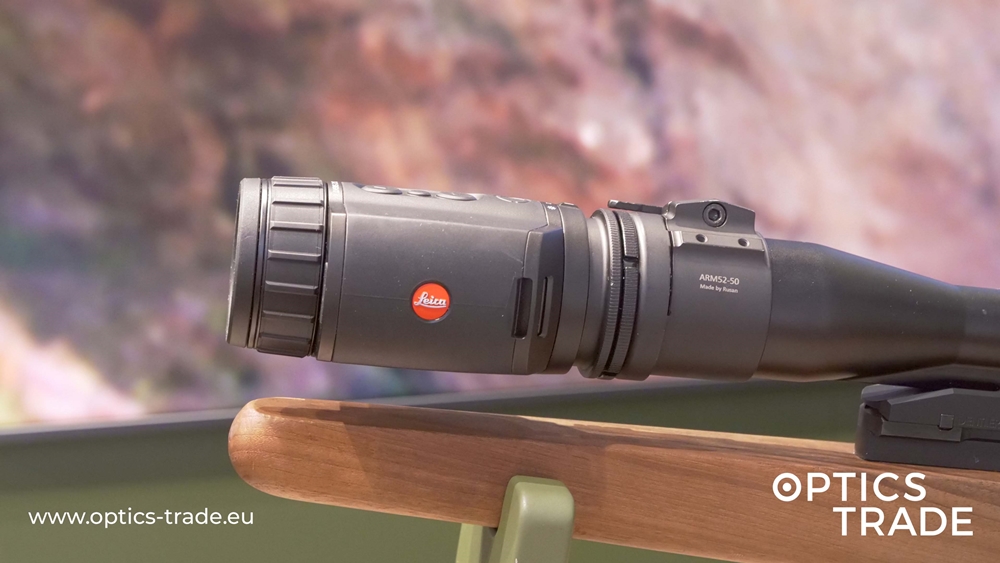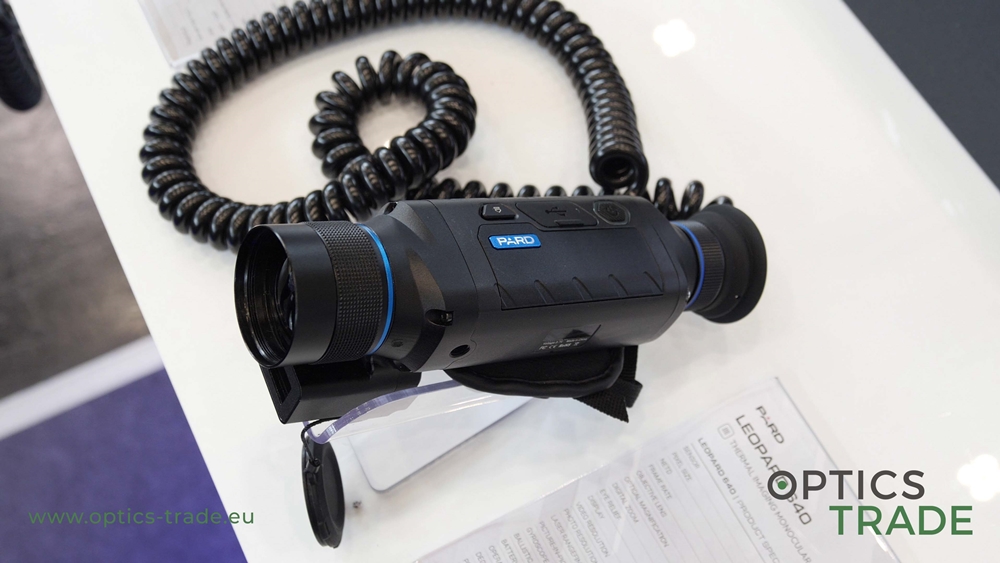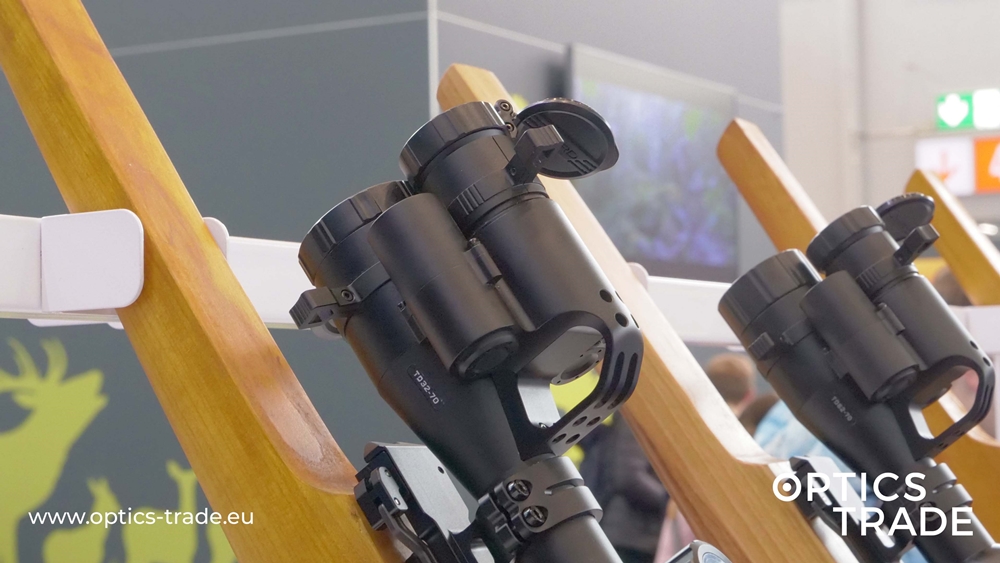Hello and welcome to another episode of Optics Trade Debates. We continue on our way through explaining the basic attributes of all types of night vision optical devices that are available on our webpage. This particular episode will focus on the basic attributes of thermal imaging monoculars or scopes. As of 2019, there are only a couple of models available. Still, they garner a lot of interest from customers so it’s only fair to expand on this topic.
Thermal imaging scopes are observational optical devices, not meant to be mounted on weapons. This is why they are more commonly referred to as thermal monoculars.
The devices that we used in this debate are Seek Thermal, Pulsar Quantum (Lite, LD, LQ, XQ), Pulsar Core and Pulsar Helion. As you can see, the latter company is the leading manufacturer of this type of night vision devices in the civilian market.
If you’ve watched some of our previous episodes, you’ll already know that there are quite a few similarities between standard night vision monoculars and thermal imaging scopes or monoculars. These devices are often used with the same purpose in mind. Hunters, surveillance or military personnel and rescuers all use them when they’re on a mission and the natural light is either scarce or completely non-existent. The difference is in the technology that powers these night vision monoculars.
As far as the construction of thermal imaging devices is concerned, we can easily enumerate the most crucial elements: first, there is a sensor, complex software with heat sensors in the middle and a display topped off by an eyepiece on the other side of the unit. Thermal imaging monoculars work just like other device forms like binoculars or clip-ons but they are specifically designed for observations using only one eye. With that, they only have one objective lens and a single display. Normally, there is an eyepiece on top of the display but for the convenience’s sake we also list devices like Seek Thermal Compact Pro FF and Reveal XR under this same category. With these products, the user is looking directly at the display as there is no need for an eyepiece.
Thermal imaging devices are all based on heat detection. In other words, they all display warm objects. No IR illuminators are needed for these devices to function, therefore they can be utilized even in pitch black and natural obstacles like fog and smoke are not a problem either. Indeed, thermal imaging devices have quite a few advantages over ordinary night vision devices.
The most important characteristics of thermal imaging monoculars are the objective lens since the optical performance greatly relies on their size. Another key element is the resolution of the sensor, as well as the display and the size of a single pixel. As of 2019, most devices on the civilian market come with the resolution powers of 388×284 pixels. More advanced devices like the Pulsar Helion series already offer the improved resolution of 640×480 pixels but with that, these monoculars are also pricier. Devices with bigger sensor resolutions are a rarity. In fact, the few thermal imaging monoculars with a display resolution of 1260×800 pixels are also the most expensive options for civilian use out there.
The last 5 years where a revolution when it comes to pixel sizes and, consequently, an improved resolution of thermal imaging devices. Only a decade ago, devices with 25-micron pixels were the norm. Compare that to contemporary thermal imaging monoculars, which usually offer a 17-micron pixel size. What is more, there have also been some recent launches of devices with 12-micron pixels and the overall image quality will only get better in the future.
Let’s move on to software. What the user notices first is the type of calibration of the sensor. During every observation, the image freezes for a moment or two while the calibration of the sensor is carried out to provide the optimal result. This is called automatic calibration. Some of the more advanced devices like Seek Thermal feature a shutterless automatic calibration, meaning that the image does not freeze.
The next important software advancement is the ability to take photos and record videos, a feature that is only available with newer thermal imaging devices like Helion. These devices come with internal storage and some even allow for the insertion of an SD card or a different way of saving photo and video material.
Many thermal imaging monoculars offer different colour palettes or colour modes. For example, the default “Black Hot” colour mode found in Pulsar Quantum Lite shows a warm object in black colour, while the backdrop is white. But there are plenty of other colour modes like “Ultramarine” and “Monochromatic Red” to choose from.
Now that we’ve explained the basic characteristics of the software, it’s time to say a few things about the display and the eyepiece. Of course, the resolution capabilities of the display is what matters most since the technology used does not differ much from one brand to another.
The build quality of the eyepiece is important as it ensures a comfortable use even when the user requires prolonged observation periods. Then there is the dioptre setting that should compensate for any difficulties the user has with their plain sight as much as possible.
Most thermal imaging devices such as binoculars and clip-ons feature the magnification power of x1 (a.i. the image is not magnified) but feature a digital zoom. Note that the default magnification setting is based on the lens diametre and display size. The general rule is: the bigger the lens, the bigger the magnification power. Another rule states that the bigger the sensor, the smaller the magnification power. That’s the basic setting.
As we stated above, thermal imaging devices feature a digital zoom. That means that all magnifications of the image are done by the software (digitally and not mechanically). You are not adjusting the system of internal lens of the objective to get the desired magnification as in the case of classic mechanical monoculars. In the simplest words: the user can only adjust the size of the pixels. With that, the image resolution decreases with magnification.
Some optical devices allow the user to remove the original eyepiece with the x1 magnification and install another (e.g. an eyepiece with x2.5 magnification lens) but with thermals that is only rarely possible.
Before making a purchase, customers interested in thermal devices need to consider what power source the device depends on. Certain devices only use an internal battery that cannot be removed, only connected to a power adapter when it needs filling up. Some other devices use mono-batteries like the standard AAs inserted via battery trays. Many manufacturers produce thermal monoculars that are powered with 2 CR032 batteries.
The fast-removable battery pack is a real tech breakthrough since it can be charged with a power bank in just a matter of seconds. It’s especially useful considering how fast thermal imaging devices can burn through batteries. Either way, the power source is one of the most important factors of your user experience.
Due to the popular demand, we filmed a separate video on suitable power sources for Pulsar Quantum thermal monoculars. It’s a recommended watch if that’s the particular thermal device you’re interested in. Note that finding suitable power sources is much easier with the Accolade and Helion line of products. Battery packs that power those devices are much more affordable and easy to charge.
Unfortunately, the majority of other companies like FLIR produces non-removable internal batteries. That means that the user must always charge them at home if they wish to use them for a prolonged period of time or always carry a power bank with. Otherwise, their plan for the day will fall through as the battery drain of thermal imaging is a real problem.
At the moment, the biggest customer group for thermal imaging binoculars are hunters and armed forces (military and police). The new, emerging market for these devices is surveillance, then there are also various rescue services like mountain assistance and firefighters that can really exploit the potential of thermal imaging and use it for good.
For instance, locating a lost hiker in the Alps is much easier using thermal imaging devices than night vision technology since obstacles like fog and trees won’t get in the way. Hopefully, all services like that will be able to use this type of devices since it will make their work so much easier.
This is everything for today. Thank you for your attention. Please like and share this video if you found it useful. If you have any questions or feedback, feel free to send us an email or leave a comment in the section below. We love to help. Subscribe to our YouTube channel for more content. See you next time!
Products mentioned:
Thermal Imaging Monoculars





Hello
Im currently trying to decide on a thermal monocular…..although discontinued I have access to a new Pulsar quantam 23v at a store near me, and then i see the newer pulsar axion 30m ( and the prices are basically the same). Between these 2, which would be the better choice, i want it for hunting and would use it to spot small and medium sized game. The zoom rates are comparable, i like that the 23v has a built in rangefinder but its not a must have, and i dont really care about wifi or the ability to record. Thanks in advance for any help you can give me.
Hello Scott!
As of late, both Axion XM30 and XM38 have been discontinued by Pulsar.
In terms of thermal and night-vision optics the bigger the lens the better the quality of the image although this is also conditioned by the quality and the type of sensor.
Both devices have an integrated stadiametric rangefinders which measure the approximate distance to the target based on its size (available sizes are: Hare, Boar and Dear).
Please note that these are not the actual laser rangefinders which can measure the distance straightforwardly.
To answer your question, Pulsar Axion XM30 is a class above Pulsar Quantum Lite XQ23V due to a bigger lens, superior sensor and better display resolution.
If you have any other questions, please contact us at [email protected]